Experiences of Implementing Evidence
You are invited to read or listen to health professionals’ experiences of implementing evidence.
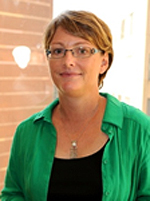 Implementing intensive upper limb training with children who have unilateral cerebral palsy
Implementing intensive upper limb training with children who have unilateral cerebral palsy
Discipline: Occupational therapy
Interview with Dr Leanne Sakzewski an occupational therapist and 2012 NHMRC TRIP Fellow (Translating Research into Practice) Postdoctoral Research Fellow at The University of Queensland, Australia
Introduction: Leanne is implementing research with occupational therapists in Queensland. In her interview, Leanne describes the evidence about intensive upper limb training programs (40+ randomised trials). She is assisting therapists to increase use of evidence-based upper limb training which meets five criteria (therapy that is goal directed, involves measureable goals, contemporary therapy approaches, provides adequate dosage of therapy/practice and involves measuring outcomes using valid instruments). Her target audience is occupational therapists across three teams in Queensland, two in Brisbane and one regional service in North Queensland. To help promote behaviour change, Leanne uses an audit feedback cycle which is a core component of her ‘intervention’ with therapists, as well as identification of barriers to uptake of evidence, a procedures manual and other training resources, delivered at a face-to-face workshop.
Click here to listen to the recording (WMA 4.6MB)
CONTACT EMAIL: l.sakzewski1@uq.edu.au
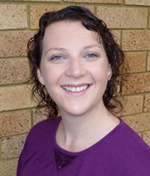 Implementing Assertive Community Treatment (ACT) across a mental health service
Implementing Assertive Community Treatment (ACT) across a mental health service
Disciplines: Occupational therapy, Rehabilitation Coordinator and other mental health professionals
Joint interview with Bethany Pade [Rehabilitation Coordinator] and Enrique Albornoz [Clinical Lead for ACT], both Occupational Therapists, employed with Mental Health Services, Nepean Blue Mountains Local Health District in Sydney, New South Wales, Australia.
Introduction: Bethany spent two years developing and implementing an ACT service in her region. She began by writing a written proposal for change for senior management, which included a review of the research. That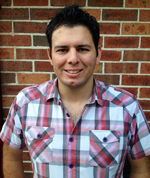 proposal seems to have
been critical to success and enabling change. Implementation commenced in 2012, and two
Local Government Areas, covering 3 regions, with different populations are involved. The team includes 7 multidisciplinary health professionals. Enrique joined the team as clinical lead four months after implementation. Bethany describes the 1998 Cochrane systematic review and more recent research which they are using to inform their implementation.
proposal seems to have
been critical to success and enabling change. Implementation commenced in 2012, and two
Local Government Areas, covering 3 regions, with different populations are involved. The team includes 7 multidisciplinary health professionals. Enrique joined the team as clinical lead four months after implementation. Bethany describes the 1998 Cochrane systematic review and more recent research which they are using to inform their implementation.
First audio-recording
(a) The first audio-recording (duration 12 mins) describes ACT, and how it is different to standard case management. Smaller caseloads were key, enabling more intensive direct services to consumers. Changes required include the type of case management provided, role changes for the team and individual members, increased frequency of contact with clients, smaller caseloads (no more than 10) and a collaborative team approach to intervention and recovery.
Education was essential to help staff change to an ACT model. Team members read a lot, and discussed key literature about ACT. They developed and implemented procedures and local practice guidelines. A review of resources to support the new function of the team was undertaken, for example the need to acquire more vehicles for the increased frequency of visits to clients. Barriers to overcome, in addition to limited resources and knowledge included difficulty allocating more time to visits and client contact and working from a team approach as opposed to individual caseloads. A booster education session was also conducted to top-up knowledge during the year.
Click here to listen to the first recording (WMA 2.8MB)
Second audio-recording
(b) The second audio-recording (duration 5 minutes) describes measures that are used to demonstrate change, before and during the 9 months after implementation. Measures include the HONOS and LSP, which are recorded every 13 weeks and the Camberwell Assessment of Need (CAN). Other measures include length and number of inpatient admissions, and the ‘Recovery Star’ to measure level of consumer engagement with clinicians and their community.
To measure fidelity, the team use the Dartmouth Assertive Community Treatment Scale (DACTS), a protocol to guide administration of the fidelity scale. The DACTS examines how well the service complies with core criteria of ‘best practice’ for an ideal ACT service based on the original studies of ACT. Data are collected from client files and the service database. After 4 months and the initial review, the team scored 82/140, which falls below the 84 required to reach fair implementation and is considered not ACT service provision. By the time of the next review, at 8 months post implementation, their score had improved to 95/140 indicating fair implementation of ACT core practices. Some of these core criteria include: Caseload size and number of contacts and resources available on the team. This fidelity measure will be completed again at 12 months post implementation of the ACT team and will then be repeated at 6 monthly intervals until a score above 113 is reached indicating good implementation.
Click here to listen to the second recording (WMA 1.2MB)
EMAIL: bethany.pade@swahs.health.nsw.gov.au or luis-enrique.albornoz@swahs.health.nsw.gov.au
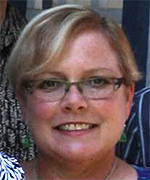 Implementing an Individual Placement and Support Model (IPS) of supported employment across a mental health service
Implementing an Individual Placement and Support Model (IPS) of supported employment across a mental health service
Disciplines: Occupational therapy, employment specialists and other mental health professionals
Interview with Catherine (Kate) Skate Vocational Consultant and Occupational Therapist, Clinical Performance Team, Western Sydney and Nepean Blue Mountains Local Health Districts in Sydney, New South Wales, Australia
Introduction: Catherine and colleagues in Western Sydney LHD have implemented an IPS model of supported employment within one mental health service. Implementation commenced in 2012. The team includes 14 multidisciplinary health
professionals and 3 staff from a local Disability Employment Service. Catherine describes results from a 1991 systematic review and 2008 randomised controlled trial which they are using to inform their implementation.
First audio-recording
(a) The first audio-recording (duration 13 mins) describes the process of co-locating an employment service and specialists alongside the mental health team. This core feature of the IPS model encourages staff to discuss education and vocational goals routinely with clients. Baseline audits of 43 files were conducted to investigate practice, including the % of client files with income source, completed care plans, vocational goals, and referral to any employment service. These audits showed that limited data were documented about the employment and education status of clients. Audit feedback was provided to staff. Quarterly updates and feedback continue to be provided.
Intervention and strategies used to address barriers included: Education about IPS and the background research using national experts; IT systems to enable better recording of client data and outcomes across jurisdictions; discussion of attitudes about client readiness for employment; roles changes within the team, including recruitment of a specialist Vocational, Education Training and Employment (VETE) Clinician to the Mental Health Service.
Click here to listen to the first recording (WMA 3.3MB)
Second audio-recording
(b) The second audio-recording (duration 5.5 minutes) describes measures that were collected to demonstrate change, before and 12 months after implementation. Repeat file audits showed improvements in the proportion of clients with income source recorded, up from approximately 25% to 50%. Care plan completions increased from 18% to 31% of clients, with 75% of plans having a vocational goal documented. About one quarter of clients had involvement of an employment specialist. A total of 14 people had been placed in open employment, compared to one person with a vocational goal in the previous year.
‘Fidelity audits’ are also completed regularly using the Supported Employment Fidelity Scale, an instrument which examines how well the service complies with core criteria of ‘best practice’. Their initial score was 81/125 (reflecting a fair level of fidelity), with a current target of 100/125. Some of these core criteria include: Caseload size (ideally 20 clients, and no higher than 25), integration of mental health and employment specialists into teams, supervision, and a visible poster in the waiting room.
Click here to listen to the second recording (WMA 1.4MB)
Contact Email: catherine.skate@swahs.health.nsw.gov.au
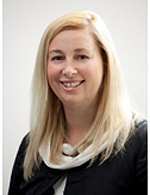 Implementing evidence across an organisation: The Cerebral Palsy Alliance (NSW)
Implementing evidence across an organisation: The Cerebral Palsy Alliance (NSW)
Discipline: Various
Interview with Associate Professor Iona Novak, Head of Research, Research Institute, Cerebral Palsy Alliance and Lanie Campbell, PhD student at the University of Notre Dame Australia in Sydney, NSW.
Introduction: Iona and Lanie, with colleague Sarah McIntyre, have been helping allied health staff across a statewide organisation to implement evidence and provide ‘best practice’ for people with cerebral palsy. They describe their Wikipedia library for professionals (and clients/families) where the top 700 journal articles about cerebral palsy treatments/approaches were appraised and colour coded based on the strength of the evidence. Professionals were then taught how to use this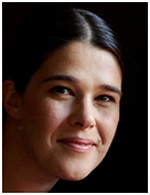 resource, and plan management using case scenarios. The effectiveness of these implementation strategies were then evaluated using a randomised trial design, where measures were obtained of knowledge, behaviour and attitudes. Job descriptions were changed to reflect expectations about use of evidence. The performance management system was changed to create incentives for practice change.
resource, and plan management using case scenarios. The effectiveness of these implementation strategies were then evaluated using a randomised trial design, where measures were obtained of knowledge, behaviour and attitudes. Job descriptions were changed to reflect expectations about use of evidence. The performance management system was changed to create incentives for practice change.
Contact Email: inovak@cerebralpalsy.org.au
Click here to listen to the recording (3Mb)
 Implementing evidence about outdoor mobility following stroke
Implementing evidence about outdoor mobility following stroke
Discipline: Occupational Therapy
Interview with Annie McCluskey, Senior Lecturer and previously Post-Doctoral Research Fellow at the University of Sydney, Australia
Introduction: Annie discusses barriers and facilitators for implementing research evidence and strategies used to implement evidence from national
clinical guidelines for stroke recovery and rehabilitation.
Contact details: annie.mccluskey@sydney.edu.au
Click here to listen to the recording (6Mb)
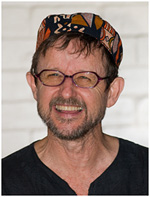 Stroke rehabilitation
Stroke rehabilitation
Discipline: Physiotherapy
Interview with Karl Schurr, physiotherapist at the stroke unit, Bankstown-Lidcombe Hospital, NSW
Introduction: Karl discusses strategies used to implement evidence from national clinical guidelines for stroke recovery and rehabilitation. His department and team focussed on implementing treadmill training and sitting balance training for inpatients with stroke.
Karl discusses what practice behaviours the staff needed to change, how they knew that their daily practice was improving in line with published evidence, how they measured change, and what barriers and enablers were encountered.
Contact details: karl.schurr@sswahsnsw.gov.au
Click here to listen to Part 1 (0.9Mb)
Click here to listen to Part 2 (1Mb)
Click here to listen to Part 3 (0.7Mb)
Click here to listen to Part 4 (1.1Mb)
Click here to listen to Part 5 (0.6Mb)
 Falls Prevention
Falls Prevention
Discipline: Occupational Therapy
Interview with Assoc/Professor Lindy Clemson, an occupational therapy researcher in the Discipline of Occupational Therapy at the University of Sydney, NSW
Introduction: Lindy describes the ‘Stepping on’ falls prevention program, a 7-week group education and self-management program for older people which has been implemented by NSW Health, Wisconsin in North America, and by non-health professionals in community organisations in NSW.
In the first interview, Lindy discusses the challenge of program fidelity and program ‘drift’, and the types of skills and knowledge that are required by services who run ‘Stepping on’.
In the second interview, Lindy talks about barriers to implementation including physical resources and funding, as well as recruitment of older people, and methods used to measure change.
Falls Prevention Audio Recording 1 (3.3Mb)
Falls Prevention Audio Recording 2 (2.3Mb)
Contact details: lindy.clemson@sydney.edu.au
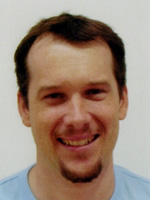 Implementing Best Practice Pressure Care for ‘At-Risk’ Adult Inpatients
Implementing Best Practice Pressure Care for ‘At-Risk’ Adult Inpatients
Disciplines: Occupational therapy and Nursing
Interview with Leo Ross, Director of occupational therapy services, QEII Hospital, a metropolitan hospital in Brisbane, Qld, Australia.
Introduction: Leo is implementing ‘good practice points’ or recommendations from a 2009 Queensland Health clinical practice guideline, and knowledge from a 2010 Cochrane review, to improve the use of pressure relieving devices (cushions and overlay mattresses) with at-risk inpatients. He describes using the PARiSH framework (Promoting Action on Research Implementation in Health Services) to guide the process, and ORCA (Organisational Readiness for Change) survey with staff. The project has been running for 3 years.
- The first audio-recording (duration 8 mins) describes the process of working with nursing administrators to change staff behaviour around screening, equipment prescription and equipment utilisation. The initial ‘problem’ was a negative result from a state-wide quality audit: 13% incidence
of pressure injuries on the day of audit at their hospital, where the target was 10% or less.
The focus for change in staff behaviours then became (i) improved screening of inpatients [within 12 hours of admission] using the Waterlow scale, to identify patients who are ‘at-risk’ of developing a pressure injury, (ii) increased prescription of chair cushions and overlay mattresses to these identified ‘at-risk’ patients (also within 12 hours of admission), and (iii) actual use of the equipment with more of these patients when a ‘spot-audit’ is conducted on the wards.
At baseline, 3 years earlier, only 10% of identified at-risk patients had a mattress overlay on their bed, and only 4% had a cushion in situ during a spot-audit. The target set was for 80% to 90% of identified patients to have these equipment items prescribed AND used routinely.
-
The second audio-recording (duration 7 mins) describes barriers to screening, prescription and use of pressure relieving devices. Key barriers were implementation ‘fatigue’ especially in nursing staff; high turnover of nursing staff, with many casual staff and shiftworkers; lack of time’; and limited equipment.
Intervention and strategies used to address barriers included: an audit-feedback cycle with nursing and occupational therapy staff; writing a business proposal to purchase more cushions and mattress overlays (equipment); posters and process flow cards; and education (rolling inservice sessions for nursing staff and ‘Train the Trainer’ workshops to ward ‘champions’, nurse induction training; presentation at grand rounds); and revised policies and procedures. Quarterly ‘spot’ audits of each identified at-risk patient were conducted (ie a ‘walk-round audit), in addition to the statewide quality audit of the hospital.
Measures were collected to demonstrate change each year, alongside quarterly audits. Repeat file audits showed improvements in the proportion of inpatients being screened (12% more patients screened for
mattress overlays; 12% more patients prescribed mattress overlays, up from 12% to 24% after 12 months). The proportion of at risk patients prescribed cushions improved by 20%, from 4% at baseline to 24% after 1 year; this improvement was maintained in year 2. More patients were screened and of those, more mattress overlays prescribed and used (12% at baseline, up to 24%). Finally The incidence of pressure injuries reduced across the hospital from 13% at baseline to 6% in year 1, and 3.8% in year 2 (ie patients with a Grade 1 or Grade 2 pressure injury), which was well below the statewide target of 10% or less.
Leo Ross Interview 1 (8 mins - 3.8MB)
Leo Ross Interview 2 (7 mins - 3.2MB)
Contact details: leo
.ross@health.qld.au